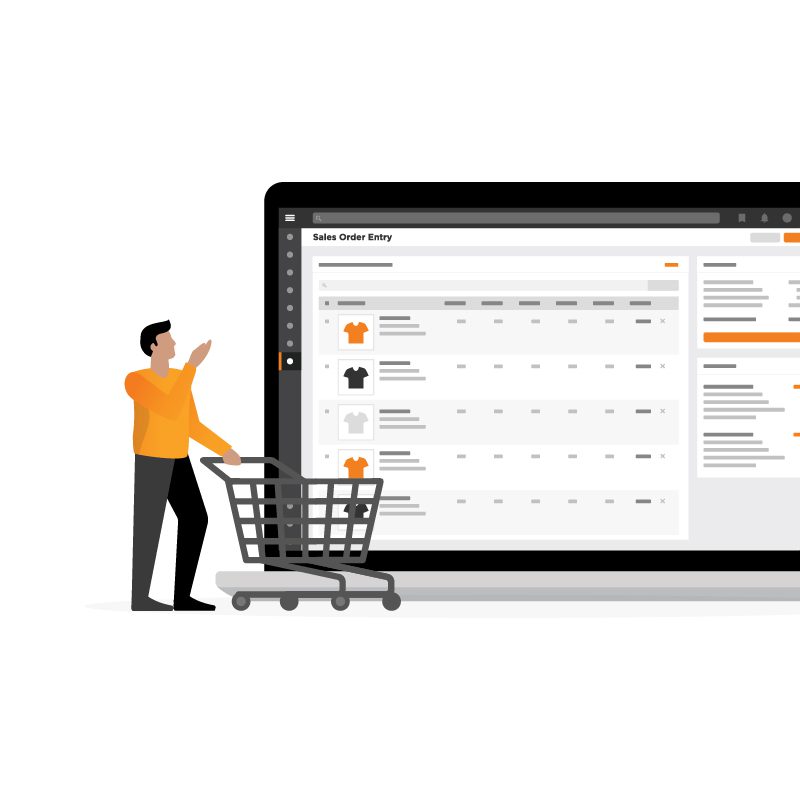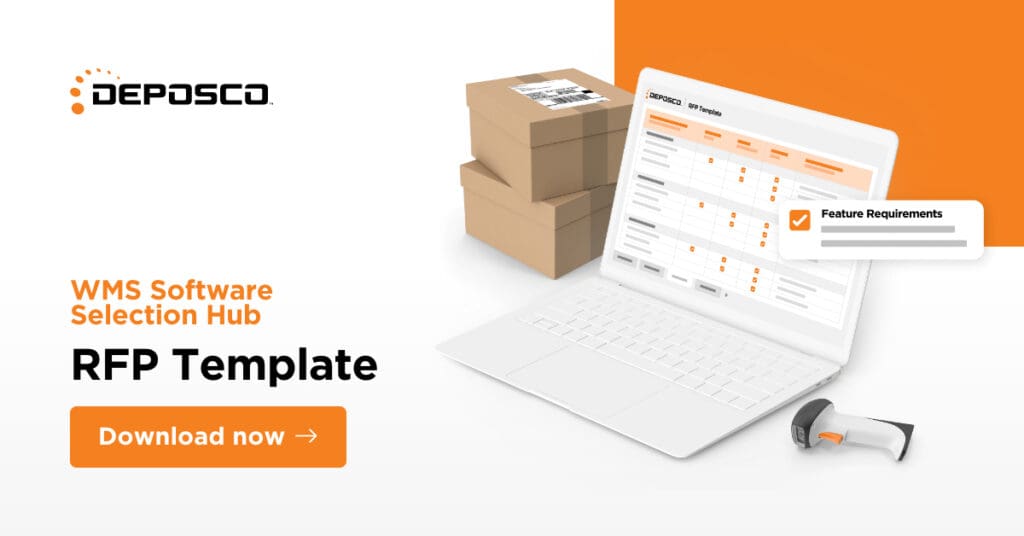Everyone’s been to – or run – a garage sale. Items purchased purposefully are now to be rifled through for pennies on the dollar. It’s a familiar cycle. Some items may go to Goodwill, and a great deal will likely go to the dump. While they remain on the books, these purchases are a drag on money, space, sanity, or all of the above. You no longer want them; you don’t need them and need them gone.
Think of the things you will find in a garage sale
- Is there a set of golf clubs used once and stored for “later”?
- Is there a bin of baby clothes – significant when you were little, now useless?
- Is there a store-branded bag – you got it for free, but it never came in handy?
- And, then, what is the story behind the DIY kit undone?
Unfortunately, businesses buying a WMS tend to go down a similar dead-end path. All of your software acquisitions seemed reasonable at the time. You likely got some use out of many of the products for a time. Ultimately, they all ended up in the corner somewhere, robbed of utility – if they had it in the first place.
Software acquisition is always done with good intentions
However, you must ask, “Is the software now dragging down your balance sheets and budgets? Is it a digital millstone on the company’s growth?” Why continue to carry something with no purpose? You can’t make it all work – if it ever did. Or make it all work together – if it wasn’t designed to. But you have a choice in what to do about it, and how you consider future software acquisition.
‘Wares don’t actively improve the business
Before you can identify what will work, you have to understand the four types of ‘wares in software acquisition to watch out for:
Shelfware
The use case made sense, and the value was there. Why did it end up in the closet?
I’ve yet to work for any company that didn’t have some software that sat in the closet. Maybe the business changed; now, the software doesn’t align with business needs. Perhaps the core user left; some specialized software requires an equally specialized user. Or, as is often the case, the company outgrew it. Continuing to use it poses more risk than reward.
There is a shadow on the wall, highlighting you own something. It just isn’t doing anything but taking up space.
What to do about it: You deserve software that actively improves the business. Not assets collecting dust. The key is to understand the financial and organizational impact of keeping it. Even undeployed software sits somewhere.
License keys could be stored with your management team and regularly inventoried.
It could be a subscription paid through auto-renewal. Some older software could be offloaded through secondary markets. Ensure you don’t have SaaS shelfware with allocated budgets; cancel those contracts and look for a SaaS WMS that will deliver the expected service, without tying up the budget.
Abandonware
Is there something you can’t give up on? It could hold sentimental value, be a lynchpin, or be politically significant elsewhere in the operation. For whatever reason, you keep that software on the books—assuming, you know,… (See my section on shelfware.)
What it currently is, that’s all it’ll ever be.
The developer has moved on. It’s not even in “maintenance mode,” with infrequent fixes and updates. It hasn’t had one in years. It could be a financial decision that the product is no longer a viable revenue stream, and they cut their losses.
This happens often with ERP WMS functionality or acquired supply chain management solutions. The developer might have gone under as well, and there’s no one left to pick up the project. The result is the same: if it breaks, you can either fix it yourself, or it’s down for the count.
Do you want to leave a critical, or even a semi-critical, process supported by non-support?
Even if you didn’t plan on it, you’re on your own now. Acquire a software system and a provider that is still actively engaged. You deserve regular updates and a clear roadmap for your future success, not an abandoned product with no help in sight.
What to do about it: accept it and move on. There is nothing you can do to bring the dead back to life, and unless you have a goal of becoming a software developer yourself, the risk compounds over time.
Source a scalable, modern warehouse management system (WMS) like Deposco and move on. The sooner you do, the quicker you derisk the business and regain the security of maintained software with active support.
Vaporware
You think you’re buying a product, and you’re really signing up for a journey.
Some less scrupulous software companies don’t actually have a product to sell. They are selling expertise over time and a completely bespoke offering. The message is bringing your vision to life. This isn’t necessarily a bad thing until you need support. Then, that’s a consulting fee. You need to add functionality, which is a consulting fee. Because it’s not a product with a market segment in mind and a user base to spread the cost over, you find yourself on the hook for every single change made to it.
Because you own it, there are no two projects like it. That might be fine if you are in a niche industry with undersupported needs and no options. But if you are just trying to run a warehouse with nothing out of the ordinary, these bespoke code projects quickly turn into quagmires.
When acquiring software, there’s also the potential that you don’t own what’s being built. You are just funding early development, and they’ll sell it to someone else. It wasn’t yours, even if you paid for it.
You deserve to buy a software product, not the idea of one sometime in the future, not vapor and future deliverables.
What to do about it: realize what it is and don’t do it. Ask the right questions during the sales cycle, demand live demos, make them go off script, speak to the product team, and verify your needs. Need help on what to ask?
Consult our WMS Capabilities Checklist, or simply schedule some time with us here.
If you already have vaporware, quantify how deep in you are and whether the juice is worth the squeeze. You are likely wading through years of sunk cost fallacy; stop spending good money after bad and go source a modern warehouse management software partner.
Bloatware
The first thing I do with a new phone is spend significant time removing applications. So much stuff is pushed onto you, either out of the box or in the first round of updates, and you are rarely given a say in it.
Sometimes referred to as ‘bundleware,’ bloatware is the software you didn’t purchase – or even want – but you got it anyway. It can be overt, or it can be stealthily bundled. More innocent examples would be productivity tools that are added. Instead of downloading them, there’s an assumption you want them. Other times, it’s software that’s layered into the software you wanted, and you get a package when you expect a single item.
The second category of bloatware, the products you didn’t want and they don’t tell you they are there, raises many questions.
- What information is a piece of software I didn’t ask for scraping and relaying?
- How many system resources are dedicated to it if it’s always on?
- If I can remove it, will it be reinstalled on the next update?
- If I can remove it, will it immediately brick the software or device I purchased?
Ask a gamer what they think about Denuvo, and you’ll get a high degree of venom about its impact on system performance. The irony is that it’s exclusively a penalty customers pay as pirates remove it quickly.
What to do about it: Know what software you’re acquiring and ask the right questions.
This can be the hardest category to avoid, as modern software is incredibly complex, and burying software in other software is necessary for many complex solutions.
Migrating from on-premise deployments has largely eliminated this problem and should be a compelling reason to acquire a modern SaaS solution.
You deserve choice and transparency in what you buy. Not hidden bloat.
Deposco doesn’t end up on the shelf
Not all warehouse software is created equal. Beyond addressing a use case, it is good to know where the platform is going, if there is ongoing investment, and that it’ll be there for you in the future.
The best software companies sell on key promises: an immediate reduction in pain, and an estimate of WMS ROI over time. They can do this because the software exists – in the present – and has a strong vision and roadmap to support it. You aren’t worried that it’ll sit on the shelf, and when it is deployed, you will be left without support.
Deposco is a SaaS warehouse management + order management platform done right.
- You’re never worried about downtime with cloud-native solutions.
- You’re not worried that the company won’t be there tomorrow, based on 14 years of doing the same thing and doing it better year over year.
- And, finally, you’re being sold a tangible deliverable with rapid time to value, not the promise of one in the future, no matter how tempting built-for-purpose bespoke providers make it sound.

